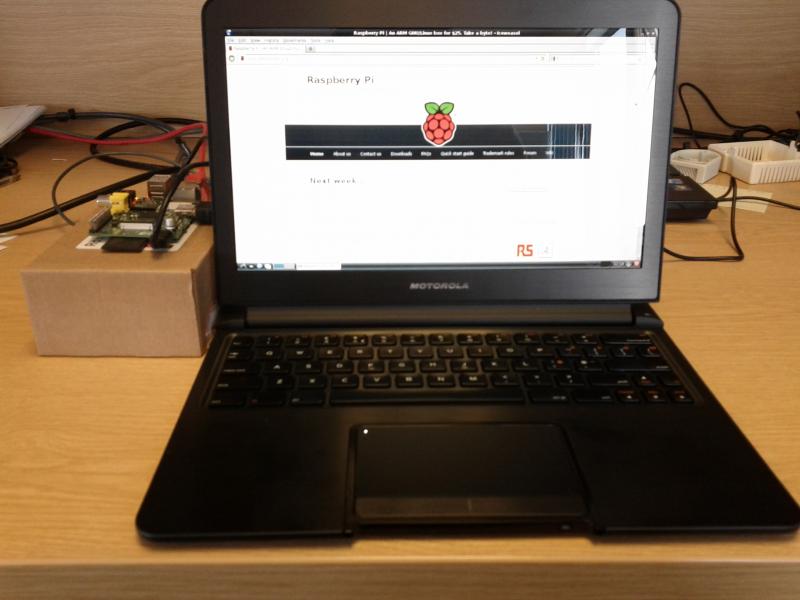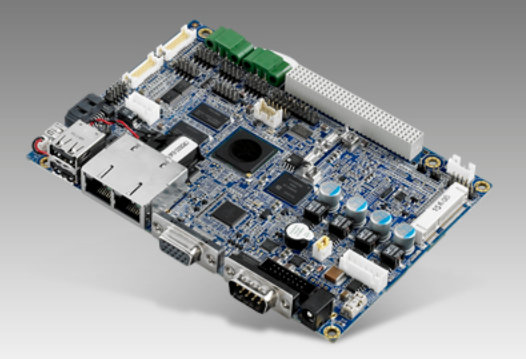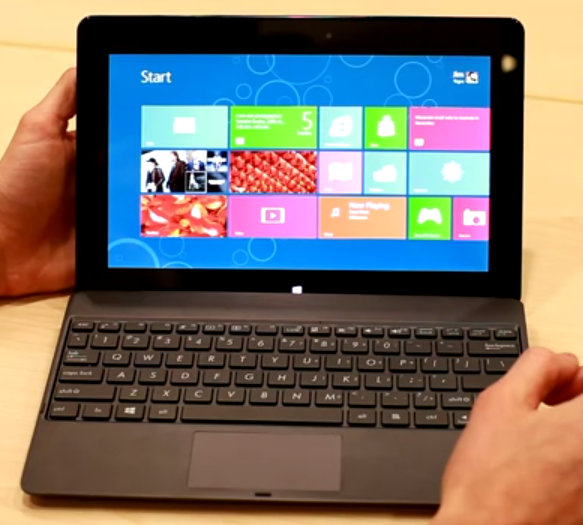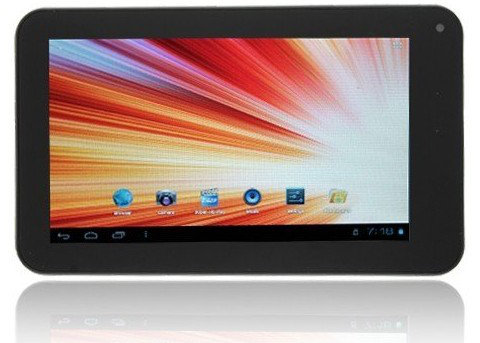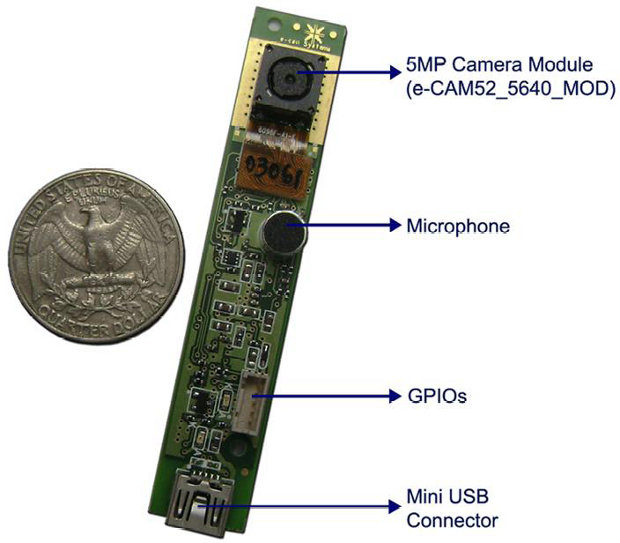There is a very interested thread over the Raspberry Pi forums started by user veryevil where he explains how he built a Raspberry Pi laptop based on Motorola Lapdock (normally used with Motorola Atrix smartphone). This is actually a real hack, because the Raspberry Pi still have to sit outside and you need to make custom cables. But the result still looks great, and veryevil claims the system runs Linux smoothly with a resolution of 1366×768 and the battery can last for hours. Some other users have joined the party, and improved on the design with shorter cables. You can check that forum post for detailed pictures of each cables. Motorola Lapdock used to be an expensive piece of equipment, but Raspberry Pi users indicated it’s currently discounted to 69.98 GBP on Amazon UK and I found it for 81 USD on Amazon US (AT&T Version) which makes it somewhat […]
Mitac Unveils ARM Based GFX Server at Computex 2012
MiTAC International announced their first ARM server (MiTAC GFX) based on Marvell ARMADA XP SoC and running Ubuntu 12.04 LTS at Computex 2012, in Taipei. This solution appears to be similar to Dell “Copper” ARM server announced last week, which also uses Marvel ARMADA XP and runs Ubuntu 12.04, except its intended to be a real product rather than just a prototype. The MiTAC GFX with ASX-1 module is intended for deployment as a general purpose server where real estate, efficiency and throughput at a realistic price are key factors and typical applications include web hosting, web browsing, email, chat, social media and networking, etc. Later, MiTAC will introduce an ASX-HP (High Performance) module for compute intensive workloads that can be add to GFX system, and ASX modules featuring 64-bit SoC are under development. MiTAC showcased a GFX System with 64 nodes (that’s 256 Cortex A9 cores) at Computex 2012, […]
Advantech RSB-4210: Freescale i.MX53 Single Board Computer
Advantech has just launched the RSB-4210, a fanless and heatsink-less RISC Single Board (RSB) powered by Freescale i.MX53 (Cortex A8) with 512 MB DDR3 and 2 GB NAND Flash. This board can operate in industrial temperature range (-40 to 85° C) and targets industrial control, digital signage, HMI/kiosk, medical, and portable applications. Here are the key features of this board: Freescale ARMCortex-A8 i.MX536 @ 800MHz Supports OpenGL ES 2.0 and OpenVG 1.1 hardware accelerators Supports full HD 1080p video decode and HD 720p hardware video encode Video Output LCD support with resolution up to 1920×1080 (default 800×480) via LVDS connector HDMI VGA Touch, UART, I2C, I2S, SPI, GPIO, USB Supports SATA storage interface and CAN-bus for vehicle applications Dimensions – 146 x 102 x 20 mm Power – 9 ~ 24 V DC with 3-watt power consumption Operating temperature – -40 ~ 85° C If you don’t mind about the […]
Texas Instruments Unveils Wi-Fi CERTIFIED Miracast Video Streaming Solution Based on OMAP 4
In my previous post, I wrote about Marvell announcement of its new 802.11ac chipset (Avastar 88W8897) that will be Wi-Fi CERTIFIED Miracast. But it’s not the only company for such solution, as Texas Instruments has also announced the availability of a complete solution for mobile devices designed to support Wi-Fi CERTIFIED Miracast, based on the Wi-Fi Alliance Wi-Fi Display Specification that enables users to reliably display high definition content from a mobile device onto a larger screen over a secure, low-latency, wireless network connection. The Miracast certification program defines a standards-based solution for streaming video and audio content over a peer-to-peer Wi-Fi Direct wireless network. TI solutions will leverage OMAP processors and its WiLink connectivity solutions to provide a Miracast platform. This new solution will be available later this year to power mobile phones, tablets, HDTVs, projectors and audio receivers. Texas Instruments solution will provide the hardware and software resources […]
ASUS Windows RT Tablet 600: The First Ever Windows 8 Tablet Is Powered By Nvidia Tegra 3
Nvidia announced on its blog that ASUS unveiled a Windows RT (previously known as Windows 8 on ARM) tablet powered by Nvidia Tegra 3 and featuring a 10.1-inch touch screen display. This is a convertible tablet with an optional keyboard dock, so it’s like a transformer with Windows 8. The Asus 600 is said to have the following specifications: Nvidia Tegra 3 (Quad Core Cortex A9) 2 GB RAM 10.1-inch Super IPS+ display (Resolution 1366 x 768) 8MP rear camera with an LED flash 2MP front camera. WiFi and Bluetooth 4.0 connectivity GPS support Gyroscope, compass and NFC. You can watch the hands-on video below provided by Nvidia. ASUS didn’t disclose pricing or availability. Jean-Luc Aufranc (CNXSoft)Jean-Luc started CNX Software in 2010 as a part-time endeavor, before quitting his job as a software engineering manager, and starting to write daily news, and reviews full time later in 2011. www.cnx-software.com
UGoos UG-LMW70 – 72 USD Android 4.0 7″ Touchscreen Tablet Powered By VIA WM8850 (Cortex A9) Processor
Back in January, VIA announced the WonderMedia Prizm WM8950 processor featuring a Cortex A9 processor @ 800 Mhz with a Mali-400 GPU, but recently I have seen a few tablets with the WM8850, the little (or rather the big) brother of WM8950, with the same Cortex A9 but cadenced at 1.2 GHz and Mali-400 GPU. VIA has apparently not officially announced this new processor, and details are not available on Wondermedia website yet, but the WM8850 targets the same markets as AllWinner A10/A13 Cortex A8 processors and is said to be competitive in price. And it must be competitive, because I just found an Android ICS tablet based on WM8850 for $72 US (including shipping) on aliexpress (UGoos UG-LMW70) with the following specifications: CPU – Via Wondermedia WM8850 Cortex A9 @ 1.2GHz + Mali-400 GPU Memory – 512MB RAM Storage – 4GB NAND FLASH + microSD card slot (Up to […]
Zedboard Xilinx Zynq-7000 Community Board is Now Available
Based in March, I wrote about Xilinx Zynq-7000 Extensible Processing Platform (EPP), a SoC comprises of a Dual Cortex A9 and an FPGA, as well as the corresponding development boards and kits: Xilinx Zynq-7000 EPP ZC702 Evaluation Kit based on Zynq-7020 with all the basic components (595 USD). Xilinx Zynq-7000 EPP Video Kit based on Zynq-7020 with all necessary hardware, software and IP components for the development of custom video applications (1195 USD). Zynq-7000 EPP ZedBoard, a low cost development board for the developers community. At the time, the first 2 (expensive) boards were available, but there was little information about the Zedboard. But yesterday evening, I noticed Zedboard website had a lot more information and we now know details about the board and it is even possible to purchase it. Here are the Zedboard specifications: Processor – Xilinx Zynq-7020 Dual ARM Cortex-A9 MPCore @ 677 MHz Memory 512 MB […]
e-con Systems Unveils e-CAM51_USB 5MP USB Camera Module
e-con Systems, an embedded design services company specializing in the development of camera solutions, has just announced the launch of e-CAM51_USB USB Camera comprised of a 5-megapixel Autofocus Camera Module (e-CAM52_5640_MOD) based on OmniVision OV5640 CMOS image sensor.This camera module targets document camera visualizers, interactive teaching & meeting solutions, OCR, scientific research, telemedicine/health, biometrics and robotics applications. The e-CAM51_USB camera module supports GPIO and microphone with an integrated analog-to-digital converter (ADC). It does not require specific drivers since it is compliant with USB Video Class (UVC) and USB Audio Class (UAC). OmniVision OV5640 CameraChip sensor features automatic image control functions such as: Automatic exposure control (AEC) Automatic white balance (AWB) Automatic band filter (ABF) 50/60Hz automatic luminance detection Automatic black level calibration (ABLC) Most of these features are supported via the standard UVC protocol providing good applications interoperability on Linux and Windows. Some e-CAM51_USB features such as GPIO control, Auto […]


